[[post.title]]
Feb 7, 2023
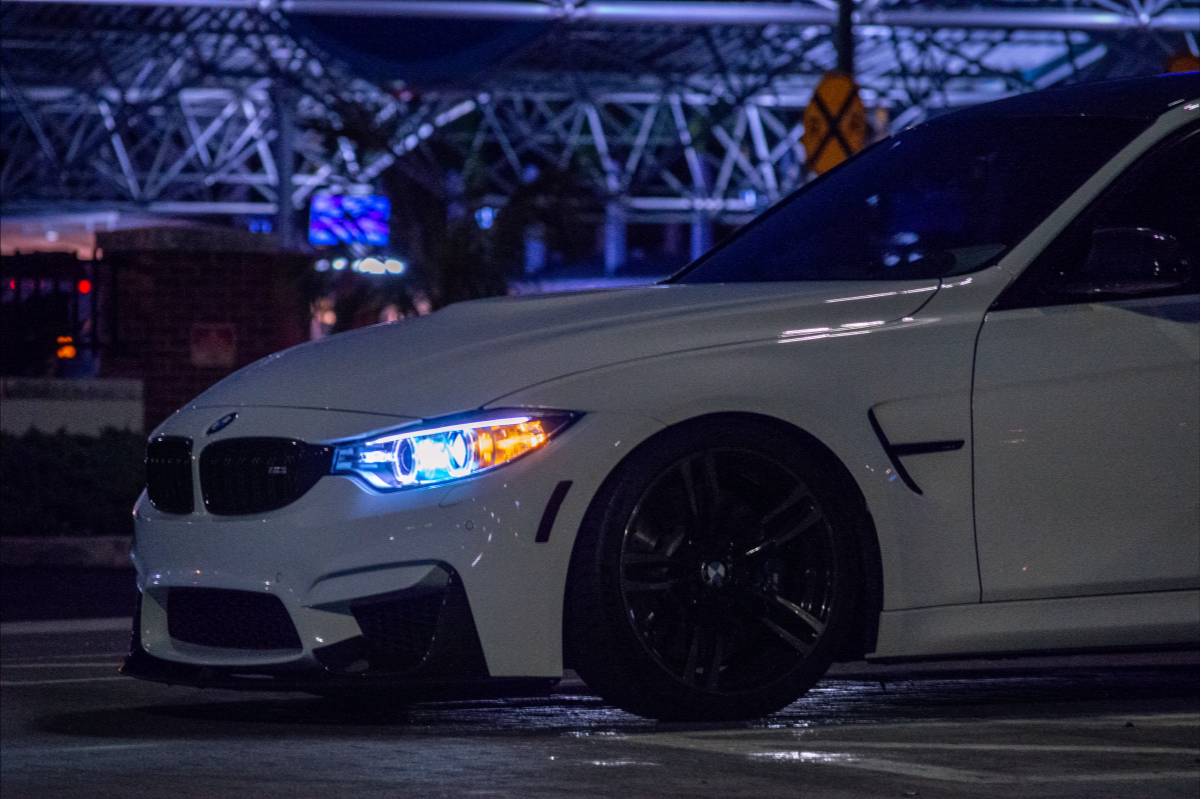
From the iconic glowing rings of the BMW E39 5 series to the cutting-edge laser headlights of modern bimmers – they all serve the same purpose. Which is letting you see the road ahead more clearly when it’s dark. At the same time, they can often add an extra flare to the overall design and looks of a car. Quite literally!
Wondering what sorts of road illumination tech the Bavarians have used on their models throughout the years and if they came up with something innovative? Or maybe you want to learn how to upgrade your BMW headlights in a simple way?
We are here to shed some light on that. Pun intended.
Joking aside, as old as the "automobile" itself, the topic of car lighting technology is a fascinating and important part of automotive history. After all, we've come a pretty long way from early candle-powered lanterns of horseless carriages to the current state-of-the-art LED matrix and laser headlights. Everything in the name of safe driving at night.
Truth be told, you could write an entire book about BMW headlights or their development. Starting from how they've changed since their inception, through the various optical systems and light sources, to some additional mechanisms used by different manufacturers.
However, we are here to discuss more practical aspects of car lights. And to surprise you that there are some headlamp upgrade options available for certain BMW models. But before we get to these potential enhancements, let's take a closer look at various lighting solutions used by our favorite German manufacturer.
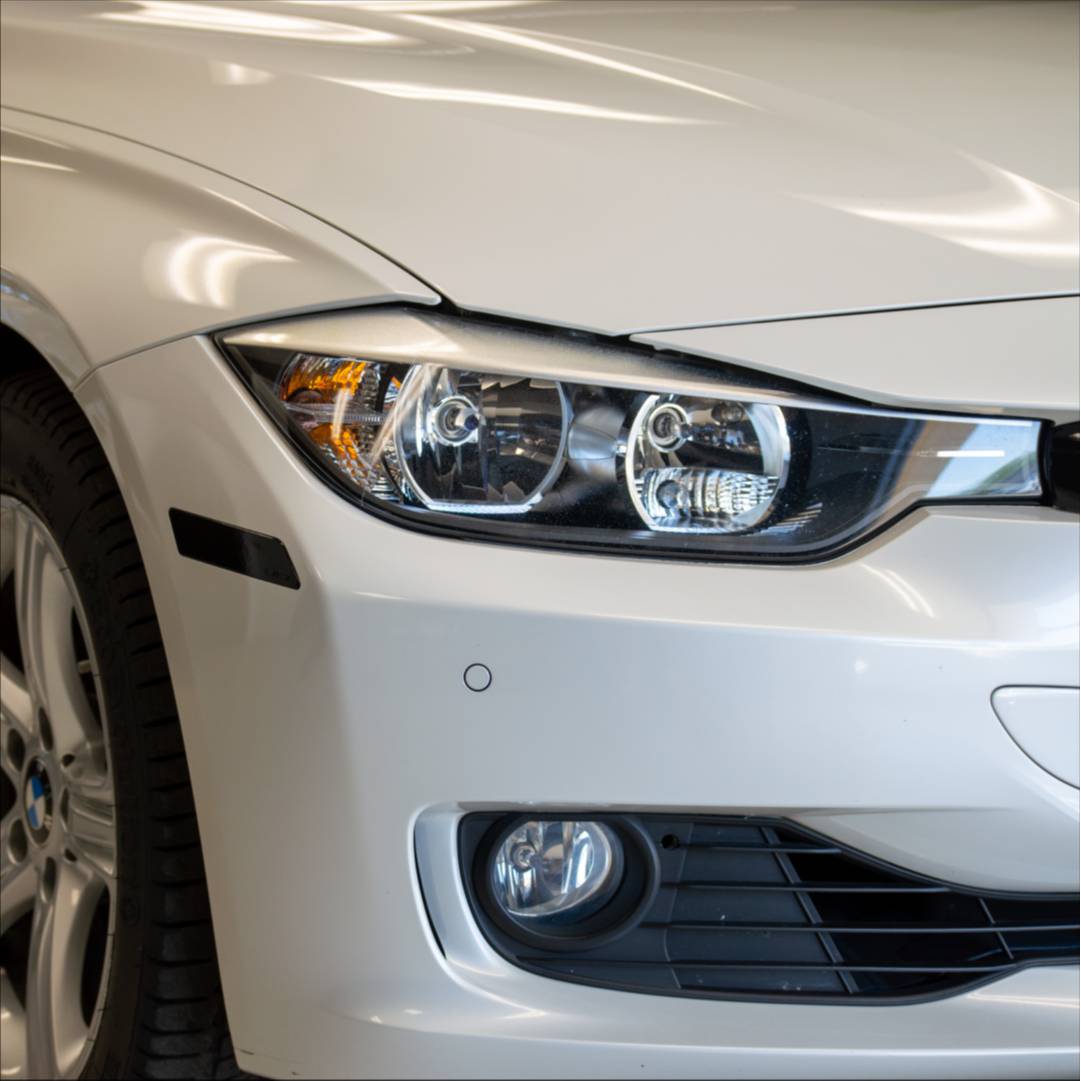 Not so long ago, these warm, yellowish headlamps were practically the only thing you could encounter when going for a drive.
Not so long ago, these warm, yellowish headlamps were practically the only thing you could encounter when going for a drive.
Although nowadays road illumination keeps getting whiter and whiter with the introduction of LED or xenon lamps, halogen headlights are still among the most popular OEM choices. Some sources claim that they amount to 80% of all automotive headlight bulbs in the world. Their popularity is especially visible in the cheaper vehicles or lower trims.
The first lamp of this type was the H1, introduced in 1962 and still used to this day. No wonder though: this technology is cheap and simple to maintain even for people that aren't mechanically inclined. When the bulb goes out, you just replace it. We even have a video showing how to change high and low beam bulbs of the F30 BMW 328i headlights.
When buying a brand new bimmer from the dealership, this technology is what you’ll find mostly on the cheaper BMWs, like BMW 116i (F40). On models like the current BMW 3 Series they have already been phased out by LEDs, but in the past they had been a standard type of headlight.
Here’s a short list of some halogen-equipped BMWs:
| Model | Generation (production years) |
| BMW 1 Series |
|
| BMW 3 Series |
|
| BMW 5 Series |
|
But how do BMW halogen headlights work exactly?
Well, it all starts with the bulb. Inside the small glass capsule there is an even smaller tungsten wire that gets heated by the flow of electricity and starts glowing. The glow is then further intensified by a mix of gasses (including halogen) and then once more, by a reflector, right before you can finally experience increased visibility.
Oh, did you know that the wire inside the bulb is shaped like a coiled coil to increase its effectiveness? And its material is also where the full name of the technology comes from, which is the tungsten-halogen.
As simple as they are, BMW halogen headlights have some disadvantages, the most significant of them being limited effectiveness. Their yellow light doesn't provide that much contrast at night and they don't illuminate the road ahead that far. In addition, they have the shortest lifespan of all headlight types, lasting only 400–1,000 hours on average.
Enter the first technology that tried to address those issues – high-intensity discharge lamps.
During your commutes, you've probably passed many incoming cars that had a blue glare to their headlights. These vehicles were, most likely, equipped with high-intensity discharge (or HID) lighting technology.
Compared to halogens, instead of a coiled wire, HIDs light up thanks to an electric arc that is produced by two electrodes in a transparent glass tube filled with noble gas. As mentioned above, BMW HID headlights offer a much cooler and more powerful glow. However, they are more complex and, at the same time, more expensive to maintain than their halogen counterparts.
High-intensity discharge lamps were first introduced on a production car in 1991 as an optional low beam upgrade for the E32 BMW 7 Series. To be more exact, the vehicle could come equipped with Litronic, which was none other than a particular type of HIDs…
So, in automotive applications, xenon lamps are the most common variety of HIDs. They operate based on the same principle as other designs of this kind, but the noble gas used as their filler is xenon, due to some crucial advantages it offers over its alternatives.
Why is it so well suited for headlight applications then?
Additionally, the lifespan of xenons is twice that of halogen lamps, reaching approximately 2,500 hours. After their introduction on the E32, Xenons gained a more wide-spread adoption in BMWs as an optional upgrade for mid 2000s E generation models.
Which cars are we talking about?
| Model | Generation (production years) |
| BMW 3 Series |
|
| BMW 5 Series |
|
| BMW 6 Series |
|
| BMW 7 Series |
|
| BMW Z8 |
|
| BMW Z4 |
|
Apart from “xenon,” you might’ve come across the term “bi-xenon.” It refers to the very same technology, only configured in a different way. Whereas in xenon headlights there are separate bulbs used for low and high beams, in a bi-xenon setup there is only one bulb for both. Instead of switching between the light sources, for beam leveling bi-xenon headlamps rely on a solenoid-controlled flap.
As innovative and bright as the BMW xenon headlights were though, carmakers wanted to improve the lighting even more. This led to the introduction of yet another light source for headlamps.
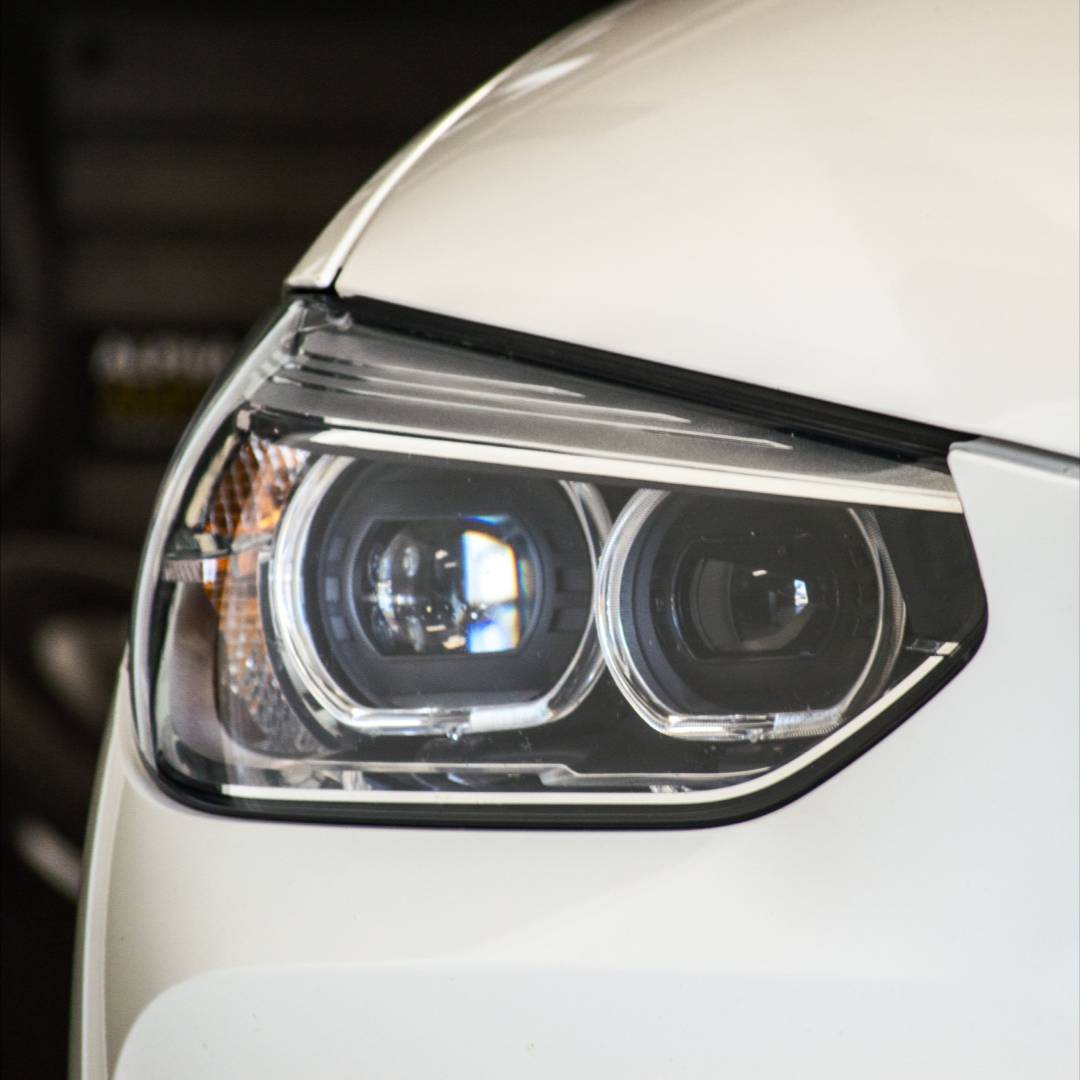 Becoming the current default for many new production vehicles, the BMW LED headlights entered the automotive world in 2006.
Becoming the current default for many new production vehicles, the BMW LED headlights entered the automotive world in 2006.
Though there isn’t much to say about the tech itself, because these headlights simply consist of regular diodes used for everything else, their impact on the car development and driving safety was rather significant. They also offer an impressive lifespan of around 30,000–50,000 hours.
A regular assembly of BMW LED headlights consists of many individual diode segments. On cheaper cars, the segments usually don’t do much more than regular halogen or xenon lamps. However, they make it relatively easy for the car manufacturers to incorporate more advanced features, such as adaptive lighting or glare reduction, to further increase the overall road safety, not only that of the driver.
But we’ll touch on this subject in a bit. Now, let’s take a closer look at what the future of headlamps might look like.
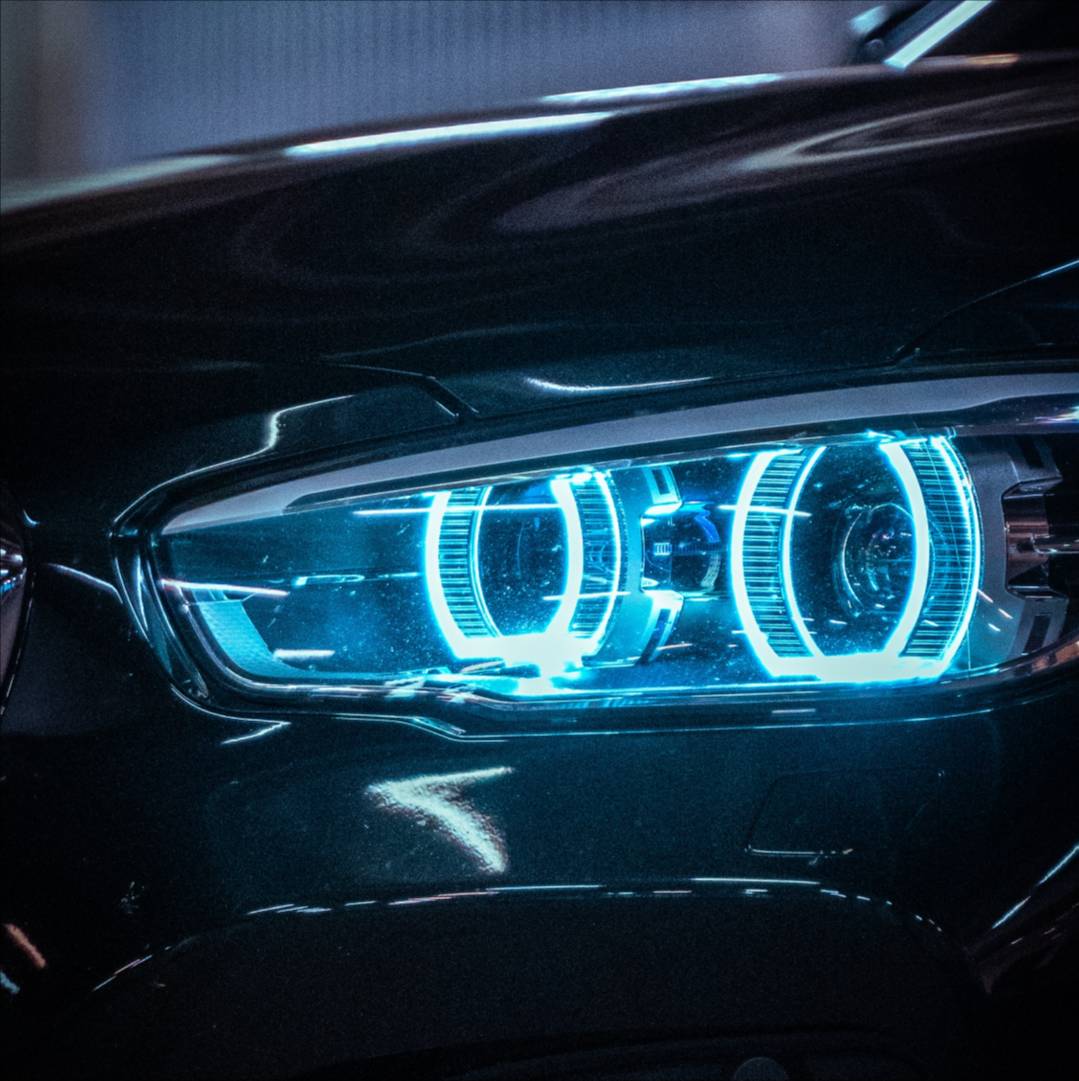 This brings us to another innovation introduced to production vehicles by BMW – the laser headlights. Offered first in 2014 on the BMW i8, it was used as an additional high-beam illumination source, in conjunction with traditional BMW LED headlights for daytime running lights. What’s really impressive about them is the fact that they provide a view range of around 600 m.
This brings us to another innovation introduced to production vehicles by BMW – the laser headlights. Offered first in 2014 on the BMW i8, it was used as an additional high-beam illumination source, in conjunction with traditional BMW LED headlights for daytime running lights. What’s really impressive about them is the fact that they provide a view range of around 600 m.
That’s right: when it’s dark, they will allow you to see almost 2000 feet of the road ahead!
The way they work is based on three high-power blue lasers that are directed onto a yellow, transparent element made of phosphorus. This converts the blue light into a white light that is 10x brighter than BMW LED headlights. The brightness is also a limiting factor for the application of laser lamp technology – as of right now, they are only used for high-beams and only turn on above around 40 mph (60 km/h), switching off when the speeds drop below 35 mph (55 km/h).
Although they offer some weight, size, and energy savings, BMW laser headlights are still a very young technology. As such, they are really expensive to produce, which is why they are only used on premium vehicles of the Bavarian lineup. The price should be offset by their longevity, which is supposed to exceed 50,000 hours, but only time will tell how long they actually last.
Currently, their main advantages are the impressive illumination range and the fact that they allow for some interesting design of headlights, due to their compact packaging. Usually, it’s also quite easy to tell them apart from other lamp types, because of some blue decals or stripes on their glass cover.
That being said, BMW already had some eye-catching designs in the past, even without the lasers.
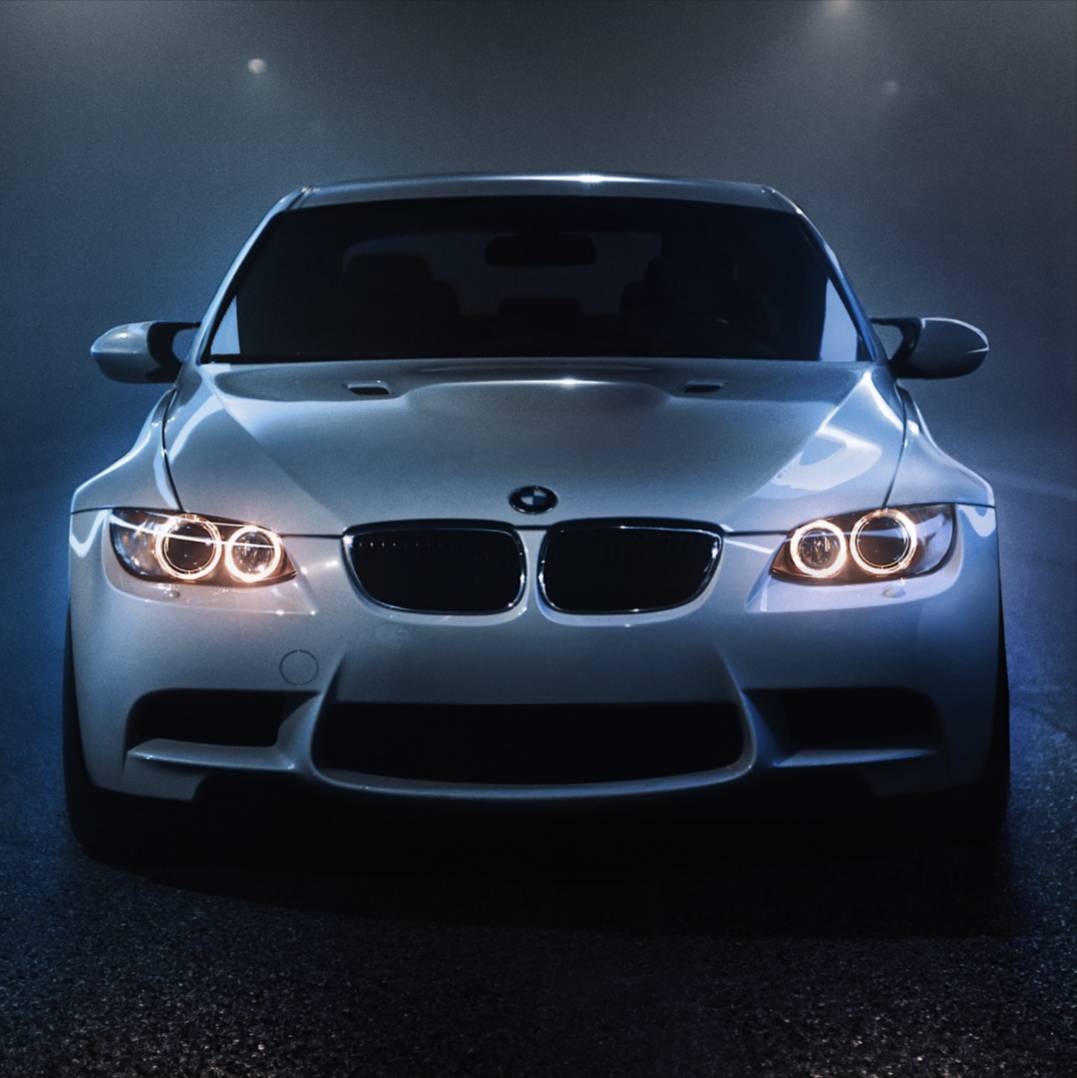 Remember the glowing rings we’ve mentioned in the introduction? By that we didn’t mean an upgraded, battery-powered logo of another German car maker, which you could stick onto an E39 if you wanted to, for some reason. We were talking about the headlight style of this classic 5 series.
Remember the glowing rings we’ve mentioned in the introduction? By that we didn’t mean an upgraded, battery-powered logo of another German car maker, which you could stick onto an E39 if you wanted to, for some reason. We were talking about the headlight style of this classic 5 series.
But what other faces did BMWs put on over the years?
Halos, angel eyes or corona rings, as BMW called them – these circle-shaped lamps of the E39 generation BMW 5 Series were used as daytime running lights. Their characteristic design was inspired by the circular headlamps of the old BMW 3 Series E30. Because of the unique look it added to a car, it quickly became a popular aftermarket upgrade, not only for bimmers.
Funnily enough, even some other car makers started copying this design. For example, Chevrolet incorporated it in their Camaro and Impala models, claiming that it increased the premium feel of the vehicles.
Another term you might’ve heard regarding the BMW headlight styles is “demon eyes” headlights. Although the name is quite literally in opposition to BMW angel eyes headlights, the two don’t necessarily have to exclude one another. BMW demon eyes are a common aftermarket way to personalize the looks of a car. By installing these headlights, you basically add a furiously red filling inside the corona rings.
Modern lamp modifications are often LED-based. This makes it possible to change color on the spot, but it’s worth keeping in mind that BMW LED headlights have to meet very strict legal and technical standards, so it might be illegal to install them, even despite the correct colors.
A different approach to original headlight styling would be what you can find on the BMW M1 supercar and the E31 BMW 8 Series. These BMWs were equipped with pop-up headlights that would… well, pop up when you turned on your daytime running lights. Operating on the same principle as the lights on Mazda Miata or Porsche 924, BMW installed pop-ups only on these two vehicles in the entire history of the brand.
Nowadays, the light sources and all the surrounding hardware are just as important as the technology that manages the BMW headlights. For example: new technologies being used in the automotive industry allowed the car manufacturers to introduce a certain degree of automation in how the lamps operate.
And that’s not only a funny gimmick to impress your friends. For example, adaptive headlights increase visibility and, consequently, your ability to see and react to obstacles or dangers on your way. At the same time, they make the roads safer for other drivers by reducing glare and decreasing the chance of blinding.
But how do they exactly work?
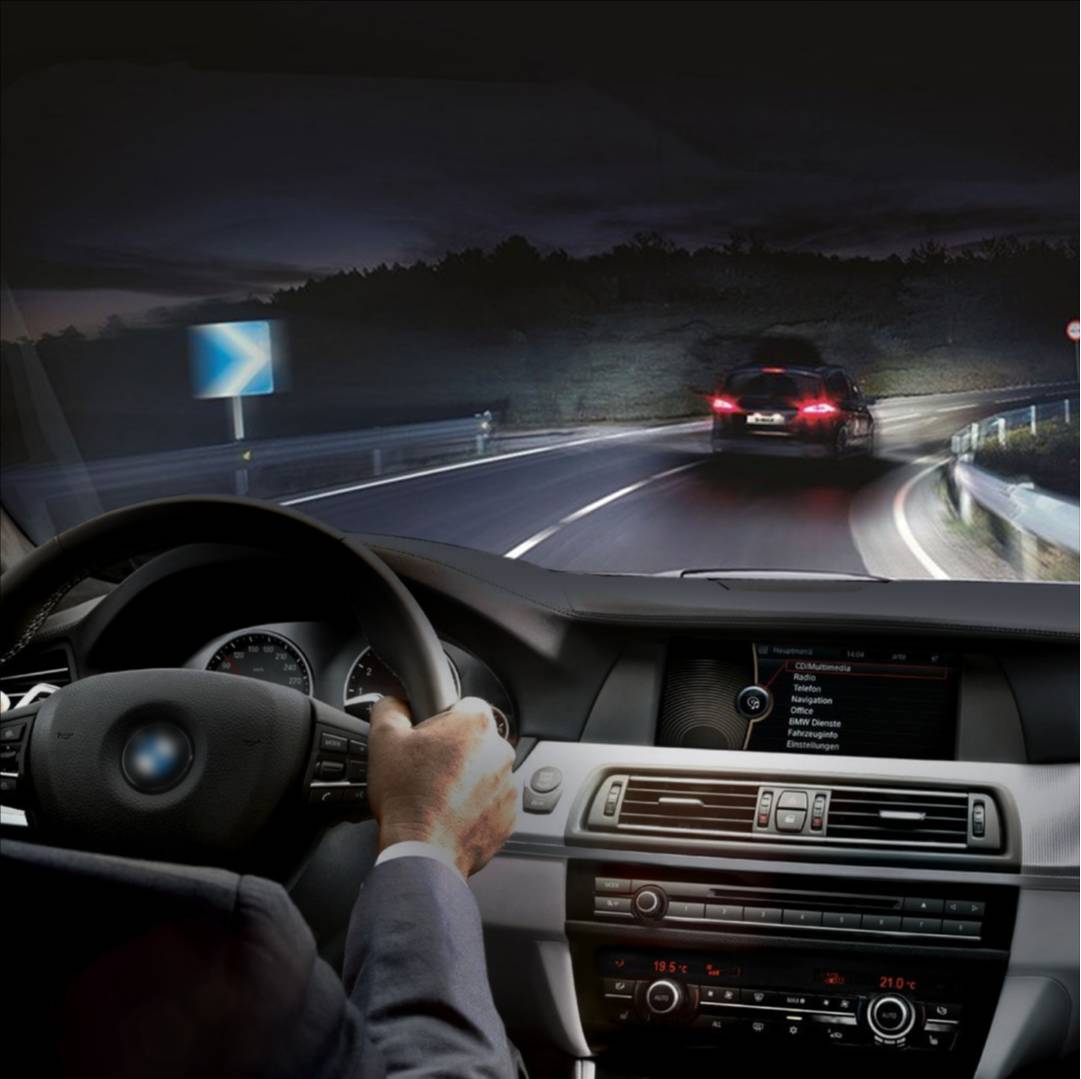 When it comes to BMW, their first tries at adaptive headlights came with the appearance of xenons. At first, the adaptive functionality was quite limited.
When it comes to BMW, their first tries at adaptive headlights came with the appearance of xenons. At first, the adaptive functionality was quite limited.
Using a special camera mounted to the rear view mirror and electric motors within the headlight assembly, the high-beam assistant could swivel the lamps horizontally or switch between the low- and high-beams. The high-beam assistant detects if there is oncoming traffic by recording points of light and adjusts the BMW adaptive headlights accordingly.
Along with latest driver assistance aids and the wider adoption of LEDs, even more advanced headlight features became available. That is not to say your xenon-equipped bimmer won’t have these features – but more on determining whether it does or not later.
Anyways, using the rain and light sensor or KAFAS system, headlights of some BMWs provide a much wider range of adaptation to the driving conditions. The illumination can now change depending on factors like speed, road shape, dips or crests, and body roll of the car.
So, what are the most useful features of modern BMW adaptive headlights?
1. Variable Light Distribution
Based on pre-programmed scenarios and external factors like traffic, road illumination is adjusted on the go to improve safety. What does it actually mean?
The area illuminated by headlamps, from the top-down view, is basically an irregularly shaped splotch of light covering both lanes and the roadside, with more range on the passenger side. Now, adaptive headlights can vary between different settings on the go, changing the shape of this splotch to provide the best visibility possible.
In the case of BMW adaptive headlights, the following patterns are available (illustrated on the image below):
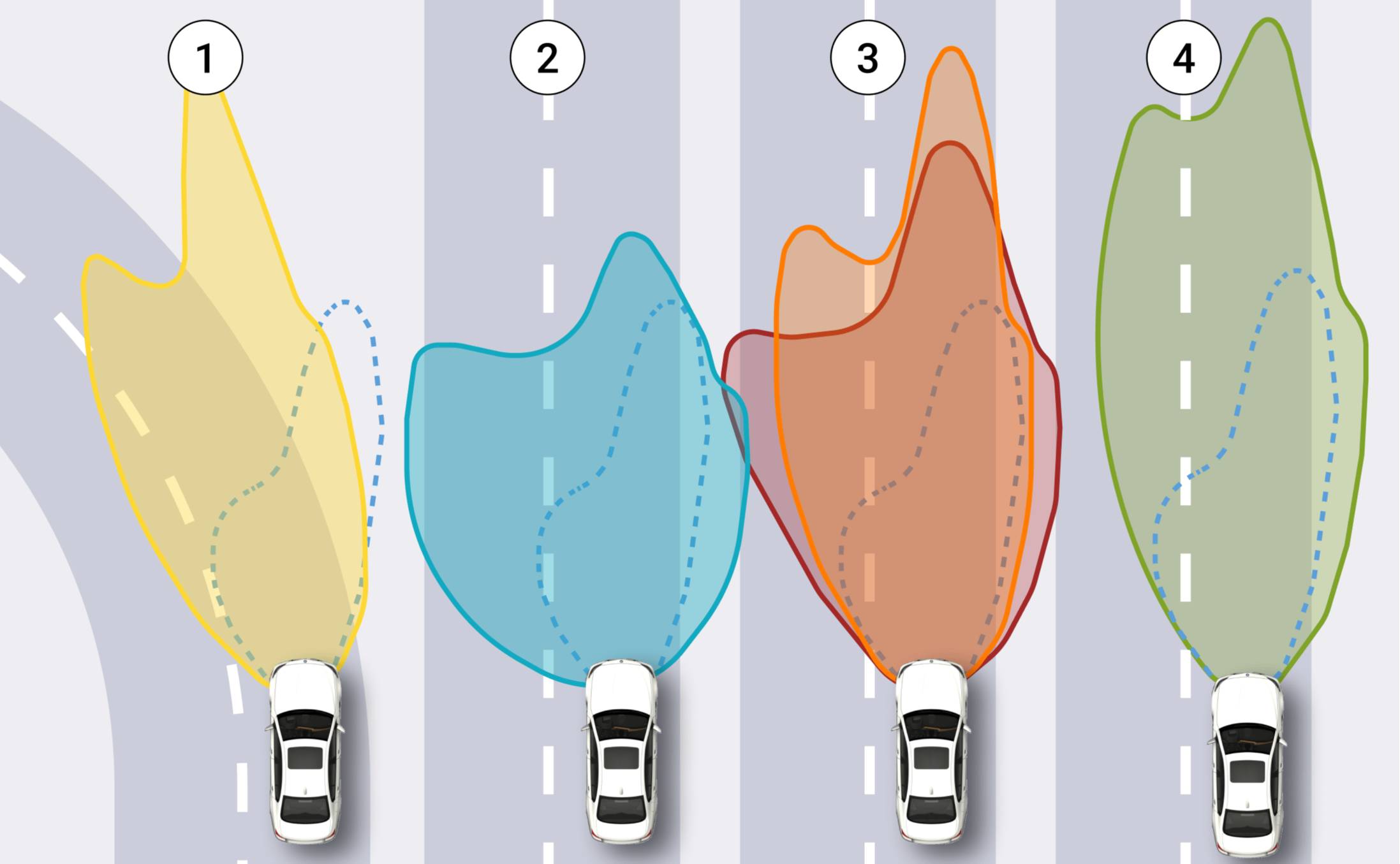
2. Anti-Dazzle
Sometimes also called “non-glare high-beam assistant,” this function is especially beneficial to other drivers you might encounter during your drives. In conjunction with Variable Light Distribution, the system will detect the oncoming traffic and automatically suppress a portion of the beam, preventing glare.
3. Follow Me Home Headlights
Compared to the other two, this feature is relatively simple and doesn’t really require that much in terms of computer control units. Enabling Follow Me Home Headlights in your car won’t make the headlights magically escort you to your home at night, but rather make them stay illuminated for a moment after you’ve left the car. You can manually set up how long they should remain turned on.
If you would like to enable some of those BMW adaptive headlights options in your car, there is a chance we have a solution for that.
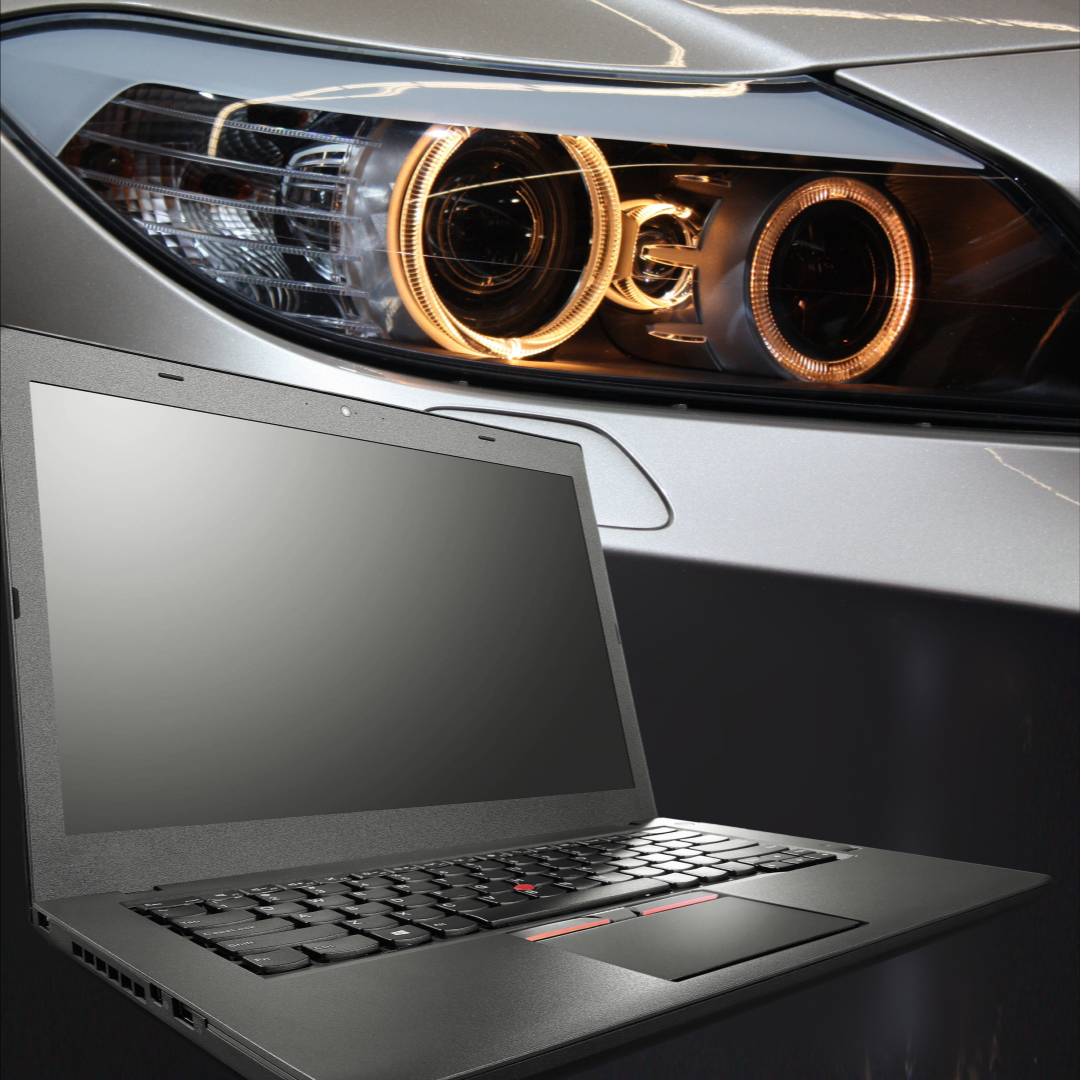 As the title of this section suggests, the way to unlock the headlight features we’ve mentioned earlier is through coding. Don’t worry – we don’t mean installing anything extra or introducing changes within the factory software. Coding is safe since it relies on unlocking the features that are already embedded in the control unit of your car, but were disabled from the factory.
As the title of this section suggests, the way to unlock the headlight features we’ve mentioned earlier is through coding. Don’t worry – we don’t mean installing anything extra or introducing changes within the factory software. Coding is safe since it relies on unlocking the features that are already embedded in the control unit of your car, but were disabled from the factory.
This can be either due to the fact that they weren’t selected when configuring the vehicle at the dealership or because of local regulations. Unless, of course, you already had them selected when buying your car. But you wouldn’t be here then, would you?
However, not all BMWs can benefit from adaptive headlights coding. If your headlamp assembly isn’t equipped with the necessary hardware or if your car doesn’t have appropriate cameras (high-beam assistant camera or KAFAS camera), you won’t be able to have these features work in your car.
To check if your BMW is suitable for headlights coding, use our VIN decoder.
After you’ve determined that your car has what’s needed for BMW adaptive headlight coding, we can help you unlock the Anti-Dazzle Headlights (which come as a package with Variable Light Distribution).
With just a simple software upgrade, you’ll be able to significantly improve your safety. All it takes is decoding your VIN, scheduling a coding session, and letting our specialist introduce the changes.
Note that if you’ve installed any aftermarket upgrades to your lamps, some errors might appear on your dashboard, due to changes in electrical resistance. Usually, they can be decoded and the control unit adjusted to the modification.
Obviously the answer depends on your individual situation. That being said, you have to consider the fact that this simple and inexpensive upgrade could literally save your life in adverse lighting conditions. With the added benefit of not annoying oncoming drivers anymore!
So, do you want to get your BMW enlightened? Check out the lighting upgrade options available in our store. Please keep in mind though that some headlight modifications aren’t considered roadworthy, according to certain state laws. Before you decide to have your lamps coded or modified in any way, be sure to verify the legality of changes with your local regulations.
Adaptive headlights on BMWs can adjust according to road conditions. The high-beam assistant analyzes factors like oncoming traffic, speed, road shape, dips or crests, and body roll of the car to redirect, suppress or turn off the headlights, providing maximum visibility without blinding other drivers.
If your BMW headlights are flickering, it can be caused by a couple of things, like blown fuses, damaged light control switches or some broken sensors (e.g., the ones comprising the KAFAS system). Unless you are looking through a camera lens at LED lamps – in this case, lights can flicker due to the fact that camera shutter speed and LED dimming frequency are not synchronized.
Usually, BMW headlights can be either turned off manually or on their own, if you’ve got them set up to automatic mode.
Customer Reviews
Comments
Rate the product
This email is already registered.
Please Log In to continue.
Categories:
[[cat.label]] ([[cat.data.length]])Popular posts:
Newsletter
Adaptive headlights on BMWs can adjust according to road conditions. The high-beam assistant analyzes factors like oncoming traffic, speed, road shape, dips or crests, and body roll of the car to redirect, suppress or turn off the headlights, providing maximum visibility without blinding other drivers.
If your BMW headlights are flickering, it can be caused by a couple of things, like blown fuses, damaged light control switches or some broken sensors (e.g., the ones comprising the KAFAS system). Unless you are looking through a camera lens at LED lamps – in this case, lights can flicker due to the fact that camera shutter speed and LED dimming frequency are not synchronized.
Usually, BMW headlights can be either turned off manually or on their own, if you’ve got them set up to automatic mode.
Customer Reviews
Comments
Rate the product
This email is already registered.
Please Log In to continue.
112-[[comment.name]]
[[comment.text|raw]]
BimmerTech
Newsletter
112-[[comment.name]]
[[comment.text|raw]]
BimmerTech